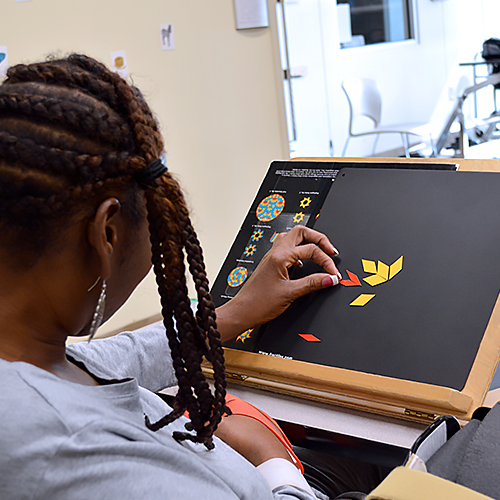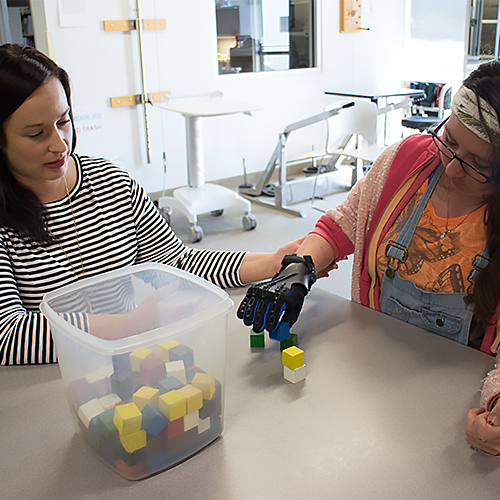Occupational Therapy
Treating the Whole Person
At Centre for Neuro Skills, occupational therapists incorporate a holistic approach to treatment, addressing a spectrum of issues. These include: physical dysfunction, visual impairments, and help with self-care, home care, sleep, leisure, and work. Because brain injury can result in complex deficits, CNS takes a multifaceted approach to treating the complexities associated with those deficits. Services include manual therapy for physical impairments, exercises and activities, motor performance training, recommendations for environmental adaptations, and training for home programs. Therapists collaborate with physical therapists, speech and language pathologists, educational therapists, and counselors to help patients remediate skills or incorporate adaptations to improve their quality of life. New skills can encompass: one-handed techniques for cooking, referencing memory aids, adjusting car settings to promote safety, or implementing a modified work or school schedule.
 A core component of our approach is deciphering a patient’s subtle but powerful deficits that may not be obvious. Vision is a key aspect of brain injury recovery that not all rehabilitation facilities provide, however, CNS includes this in its occupational therapy program. Roughly half of all patients will experience visual dysfunction, which could negatively impact:
A core component of our approach is deciphering a patient’s subtle but powerful deficits that may not be obvious. Vision is a key aspect of brain injury recovery that not all rehabilitation facilities provide, however, CNS includes this in its occupational therapy program. Roughly half of all patients will experience visual dysfunction, which could negatively impact:
- Cognitive skills that affect attention, memory, and reading
- Balance, spatial orientation, and pathfinding skills
- Visual motor control and/or hand-eye coordination
- Safe community mobility (scanning for hazards, peripheral awareness)
- Returning to work and/or driving
To address this, neuro-optometric rehabilitation optometrists create a vision therapy program for patients. Those recommendations are then carried out by CNS, based on optometrist input. Collaborative efforts are further enhanced by communication with physicians, neurologists, case managers, and therapists.
 A component of the program may also include community reintegration. In the clinic, safety and independence are evaluated and treated, and therapists can simulate a patient’s work environment as a model for returning to productivity. For instance, educators can practice lecturing and covering lessons in mock classroom settings. Finance professionals can practice counting mock bills and making change while communicating with others in an office setting. If performance skills appear intact, patients may have the opportunity to demonstrate their safety awareness in the community. Therapists can accompany a patient to conduct worksite evaluations, then supervise on-the-job trials to further assess a return to work with or without modifications. The goal is to rebuild skills, reconnect with the community, and help patients focus in the midst of normal distractions.
A component of the program may also include community reintegration. In the clinic, safety and independence are evaluated and treated, and therapists can simulate a patient’s work environment as a model for returning to productivity. For instance, educators can practice lecturing and covering lessons in mock classroom settings. Finance professionals can practice counting mock bills and making change while communicating with others in an office setting. If performance skills appear intact, patients may have the opportunity to demonstrate their safety awareness in the community. Therapists can accompany a patient to conduct worksite evaluations, then supervise on-the-job trials to further assess a return to work with or without modifications. The goal is to rebuild skills, reconnect with the community, and help patients focus in the midst of normal distractions.

